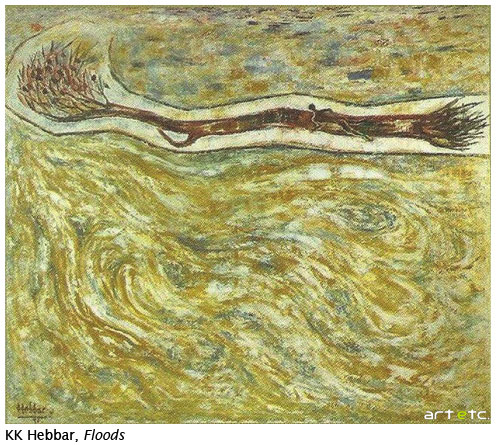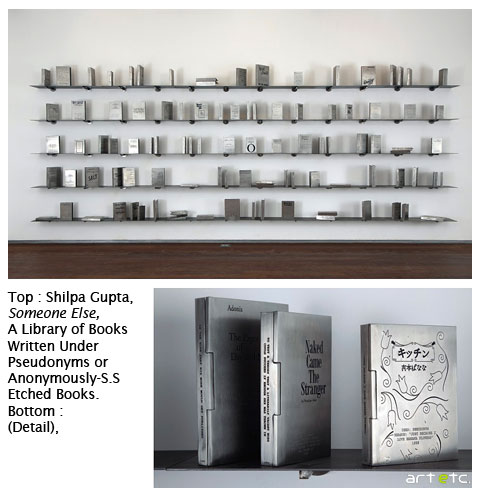- Publisher's Note
- Editorial
- What's Behind This Orange Facade!
- “First you are drawn in by something akin to beauty and then you feel the despair, the cruelty.”
- Art as an Effective Tool against Socio-Political Injustice
- Outlining the Language of Dissent
- Modern Protest Art
- Painting as Social Protest by Indian artists of 1960-s
- Awakening, Resistance and Inversion: Art for Change
- Dadaism
- Peredvizhniki
- A Protected Secret of Contemporary World Art: Japanese Protest Art of 1950s to Early 1970s
- Protest Art from the MENA Countries
- Writing as Transgression: Two Decades of Graffiti in New York Subways
- Goya: An Act of Faith
- Transgressions and Revelations: Frida Kahlo
- The Art of Resistance: The Works of Jane Alexander
- Larissa Sansour: Born to protest?!
- ‘Banksy’: Stencilised Protests
- Journey to the Heart of Islam
- Seven Indian Painters At the Peabody Essex Museum
- Art Chennai 2012 - A Curtain Raiser
- Art Dubai Launches Sixth Edition
- "Torture is Not Art, Nor is Culture" AnimaNaturalis
- The ŠKODA Prize for Indian Contemporary Art 2011
- A(f)Fair of Art: Hope and Despair
- Cross Cultural Encounters
- Style Redefined-The Mercedes-Benz Museum
- Soviet Posters: From the October Revolution to the Second World War
- Masterworks: Jewels of the Collection at the Rubin Museum of Art
- The Mysterious Antonio Stellatelli and His Collections
- Random Strokes
- A ‘Rare’fied Sense of Being Top-Heavy
- The Red-Tape Noose Around India's Art Market
- What Happened and What's Forthcoming
- Art Events Kolkata, January – February 2012
- Mumbai Art Sighting
- Art Bengaluru
- Delhi Dias
- Musings from Chennai
- Preview, February, 2012 – March, 2012
- In the News-February 2012
- Cover
ART news & views
Mumbai Art Sighting
Issue No: 26 Month: 3 Year: 2012
by Jasmine Shah Varma
Revisiting K K Hebbar
 The final stop of the travelling retrospective of artist Kattingeri Krishna Hebbar opened at Mumbai's National Gallery of Modern Art (NGMA) on February 2nd. A total of 180 works travelled here after showing first at Bangalore's and Delhi's NGMA. At a time when talk of India's Modernists is limited to four or five names, Hebbar's retrospective is a welcome event. Curated by his two daughters, artist Rekha Rao and art historian Rajani Prasanna, the collection provided a picture of the artist's professional journey.
The final stop of the travelling retrospective of artist Kattingeri Krishna Hebbar opened at Mumbai's National Gallery of Modern Art (NGMA) on February 2nd. A total of 180 works travelled here after showing first at Bangalore's and Delhi's NGMA. At a time when talk of India's Modernists is limited to four or five names, Hebbar's retrospective is a welcome event. Curated by his two daughters, artist Rekha Rao and art historian Rajani Prasanna, the collection provided a picture of the artist's professional journey.
A celebrated artist in the 70's and the 80's he was felicitated with awards and honours such as the Padma Bhushan, Gaurav Puraskar and Padma Shree. At the exhibition there's a selection of photographic memorabilia featuring Hebbar in the company of dignitaries including Pt. Nehru, Dr. S Radhakrishnan, Dr. Rajendra Prasad and Indira Gandhi and pictures of travels to Berlin and Moscow. This is a touching glimpse of the artist's prominence that seems to have diminished in the last 10-15 years.
The retrospective throws light on his practice in the context of history of art in Post Independent India. He was among other prominent artists that were not in the Progressive Artist's Group. In the drawings we see several examples of how music and Indian classical dance forms inspired him to visually depict a sense of rhythm and stance. He also drew inspiration from folk art. His portraits like the evocative one titled Mother (1945) displayed his Western academic training at the Sir JJ School of Art. Folk stories, village scenes and the lives of the underprivileged were recurring themes in his work. His renderings were true in capturing the ethos and sentiment of the Indian masses even as some of his contemporaries were inclined on internationalism. The paintings with social themes weren't so much a protest or activism but his observations of human beings belonging to a certain strata. His later works tended towards abstractions which are probably the strongest and his most known phase. He established a signature style of swirly strokes in his emotive landscapes depicting the volatility of natural elements as seen in High Tide or Floods. He also tackled metaphysical themes with stimulating use of the power of colours as seen in Cosmic Energy.
The exhibition concludes on March 4.
A street (af)fair
 The 14th edition of the Kala Ghoda Arts Festival took place between February 4 and 12, 2012 in Mumbai's art district Kala Ghoda. Spanning the fields of literature, dance, cinema, visual arts, music, theatre and activities such as heritage walks, workshops for children, food demonstrations and street performances of folk arts, every year 9 days of February are a cultural whirlwind. The Rampart Row, a street in Kala Ghoda is the centre of most activities as this is where the hugely popular assorted street stalls selling all sorts of knick knacks are installed as well as the large scale visual art installations.
The 14th edition of the Kala Ghoda Arts Festival took place between February 4 and 12, 2012 in Mumbai's art district Kala Ghoda. Spanning the fields of literature, dance, cinema, visual arts, music, theatre and activities such as heritage walks, workshops for children, food demonstrations and street performances of folk arts, every year 9 days of February are a cultural whirlwind. The Rampart Row, a street in Kala Ghoda is the centre of most activities as this is where the hugely popular assorted street stalls selling all sorts of knick knacks are installed as well as the large scale visual art installations.
This year various art installations that made social commentary caught the attention of the public. That most of the visual elements were being consumed with cameras for some clever shots rather than observing and contemplating on art is another matter. The interactive art projects engaged the usually nonvisual art viewing public. For instance, a giant knight made of wood was placed in the parking lot and the public was urged to express itself creatively by scribbling on it. Conceptualised by Pankaj Garde it had a tongue in cheek title Make a Creative Move. On the first day of the festival artist Monali Meher captivated the passerby's with her performance art piece Mass on the street. Her act involved herself lying on the street and then drawing an outline of her figure with white chalk. After she had completed drawing a figure she would write words like 'pain', 'you', 'alive' in it. The performance took place over an hour and she outlined herself tirelessly over and over again on the street.
Making social commentary on topics that affect the common man was the central concern in the installations. One concept that stood out was Vikram Arora's Under the Table. An office, including things like a desk, chair, files, telephone, photo frames of Mahatma Gandhi and others was suspended from a tree but upside down. Under the objects a mirror was placed playing the dual purpose of reflecting the underside of the table as well as to get the viewer to reflect on the subject of bureaucracy and corruption. Another work that became popular with the crowds was Sumeet Patil's Crow as Common Man, an installation of a giant crow surrounded by some smaller ones. The black bird is a ubiquitous feature of Mumbai. Recontextualising the Hindu belief that crows bring salvation to the dead, Patil's art work hoped that Mumbaikars get salvation from its never-ending problems via each one of the sculpted crows.
There were several installation projects by Arzan Khambatta and Brinda Miller (A-mazing made of mineral water bottles), Krsna Mehta (Cutting Chai made of thousands of glasses used to serve tea on the street), Parag Kashinath Tandel (Big Catch made of waste caught in fishing nets) and Paresh Maity (Fading Away) to name a few striking ones. There were displays of special projects too by artists Himanshu S and photo-journalist Sudharak Olwe who run programmes with the underprivileged. Their respective programmes involved training and guiding children and adults from the slums to paint, draw and photograph. The results of the programmes were on display.
This year the visual section made quite an impact on the viewers and the credit goes to co-curators Brinda Miller and Tarana Khubchandani who sifted several proposals before presenting the final selection at the festival.
Identity Crisis
 Shilpa Gupta's solo show Someone Else was held at Chemould Prescott Road from January 21 to February 16. Most of the works exhibited were dated 2008 onwards and some of those have been seen in various shows. In one of the newer works, also titled Someone Else Gupta takes course to literary and fiction writers who have assumed pseudonyms to credit their work. Through a range of examples of writers and books written over centuries, across countries, faiths and genders Gupta examines the reasons why identities had to be assumed by these people. What were the circumstances (personal, social or political) that led authors to use a name other than their own: fear, shame, marginalisation or persecution? This query has been executed charmingly. We see shelves lined with books made of stainless steel with the title and assumed author name etched in it, replicating the original cover of the book under consideration. And on the spine of the book Gupta gives in her own words the reason why the author chose to use a pseudonym. With the 100 books lined up we get a good sense of what it would mean to have the freedom of using one's own identity taken or given away.
Shilpa Gupta's solo show Someone Else was held at Chemould Prescott Road from January 21 to February 16. Most of the works exhibited were dated 2008 onwards and some of those have been seen in various shows. In one of the newer works, also titled Someone Else Gupta takes course to literary and fiction writers who have assumed pseudonyms to credit their work. Through a range of examples of writers and books written over centuries, across countries, faiths and genders Gupta examines the reasons why identities had to be assumed by these people. What were the circumstances (personal, social or political) that led authors to use a name other than their own: fear, shame, marginalisation or persecution? This query has been executed charmingly. We see shelves lined with books made of stainless steel with the title and assumed author name etched in it, replicating the original cover of the book under consideration. And on the spine of the book Gupta gives in her own words the reason why the author chose to use a pseudonym. With the 100 books lined up we get a good sense of what it would mean to have the freedom of using one's own identity taken or given away.
This work is just one among others in this show where Gupta tackles the issue of identity in relation to the self, of the other or a country. Her preoccupation with the idea of borders that can be interpreted as being personal or the one between nations is seen in Speaking Wall (2009-2010). It is an interactive work where the viewer is asked to wear the given headphones and follow instructions coming out of a LCD monitor on the wall. This work mimics a motion sensor device.
Gupta is one of the few artists whose handling of multi-media and new media makes it more than the medium. Her concepts, queries and the medium are well integrated. She converses about contemporary issues with today's technology (for instance, flapboard in one of the works) while not letting the latter override her concerns. She is truly contemporary and relevant.